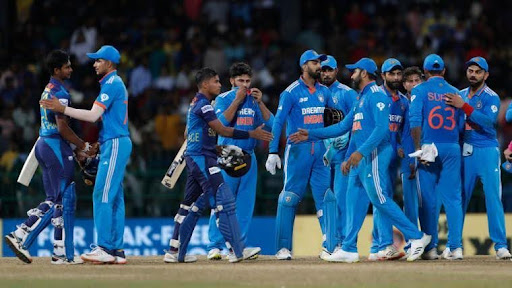
India’s ODI Series Defeat to Sri Lanka: What Are the Biggest Takeaways?
India’s ODI Series Defeat to Sri Lanka: What Are the Biggest Takeaways?
2024-08-19 Author : ch799
India’s recent ODI series defeat to Sri Lanka was a rare setback, marking their first series loss to the island nation in 27 years. As the dust settles on this surprising result, it's an opportune moment to reflect on the key takeaways from the series, especially with less cricket on the immediate horizon. Despite some positives, there are significant concerns that the Indian cricket team must address as they gear up for future challenges like the 2025 Champions Trophy and the 2027 World Cup.
Players Form
One of the most alarming aspects of the series was the underperformance of several key Indian players.
KL
Rahul, a
pivotal figure in India’s middle order, was notably dropped from the XI for the third ODI—a stark reminder
of the
current selection struggles. Rahul’s absence highlighted the team’s ongoing search for consistency in the
middle order.
Similarly, Virat Kohli and Shreyas Iyer, who were instrumental in India’s 2023 World Cup campaign, failed
to find their
rhythm throughout the series. Shubman Gill, another young talent who had shown promise, also struggled to
make an
impact. The collective slump in form of these players, who were previously reliable, raises concerns about
their
readiness and form leading into crucial tournaments.
In the bowling department, Mohammed Siraj’s performance was particularly worrisome. Despite being a key
figure in the
bowling lineup, Siraj’s lackluster displays, alongside the underwhelming performances of Arshdeep Singh,
underscored a
deeper issue in India’s pace attack.
Pace Attack
India’s pace attack faced a significant test during this series, especially with Jasprit Bumrah and
Mohammed Shami
rested. The responsibility fell on Mohammed Siraj and Arshdeep Singh, but their performances were far from
impressive.
Siraj, in particular, struggled to deliver effective spells and lacked the penetration needed to make an
impact.
Both Siraj and Arshdeep failed to capitalize on the conditions, with their pace-on deliveries often being
dispatched for
boundaries. Their inability to adjust their strategies, such as incorporating more cutters, exposed a
vulnerability in
India’s pace attack. The decision not to debut Harshit Rana suggests that the team management may have
been hesitant to
experiment further, highlighting a potential issue with depth and adaptability in the pace department.
Role Playing Clarity
Another significant issue was the lack of role clarity for many players. The Indian think tank, led by
Gautam Gambhir,
used this series as an opportunity to test various combinations and roles. While this approach is valuable
for
experimentation, it resulted in a lack of clear roles and responsibilities for the players.
Shreyas Iyer and KL Rahul, for instance, were shuffled up and down the order, creating uncertainty in
their roles.
All-rounders like Washington Sundar, Axar Patel, and Shivam Dube also did not have defined positions,
which may have
impacted their performances. Even Riyan Parag, who played only one game, was positioned after the top and
middle order
had already collapsed.
The coaching staff’s emphasis on adapting to different stages of the game, rather than fixed roles, might
have
contributed to the lack of cohesion and consistency. Going forward, providing more defined roles for
frontline batters
and all-rounders will be crucial for building a more stable and effective team.